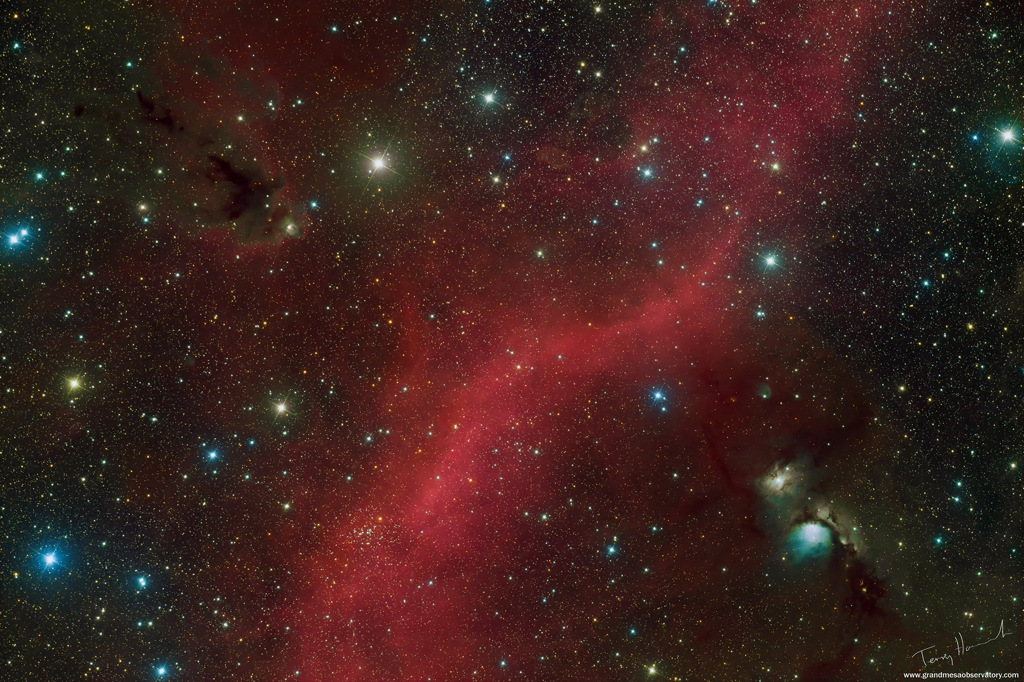2020年11月5日
North of Orion’s Belt
Image Credit & Copyright: Terry Hancock (Grand Mesa Observatory)
Explanation: Bright stars, interstellar clouds of dust and glowing nebulae fill this cosmic scene, a skyscape just north of Orion’s belt. Close to the plane of our Milky Way Galaxy, the wide field view spans just under 5 degrees or about 10 full moons on the sky. Striking bluish M78, a reflection nebula, is at the lower right. M78’s tint is due to dust preferentially reflecting the blue light of hot, young stars. In colorful contrast, the red swath of glowing hydrogen gas streaming through the center is part of the region’s faint but extensive emission nebula known as Barnard’s Loop. At upper left, a dark dust cloud forms a prominent silhouette cataloged as LDN 1622. While M78 and the complex Barnard’s Loop are some 1,500 light-years away, LDN 1622 is likely to be much closer, only about 500 light-years distant from our fair planet Earth.
Tomorrow’s picture: pixels in space
猎户腰带以北
影像提供与版权: Terry Hancock (Grand Mesa Observatory)
说明: 在这幅呈现猎户腰带北侧的宇宙景观里,到处都是亮星、星际尘埃云及辉光星云。这片紧邻我们银河系盘面的宽广视野,涵盖约5度(10个满月)的天区。影像的右下角,有明亮泛蓝的反射星云M78。 M78的色泽,来自尘埃反射大量源自附近炽热年轻恒星的泛蓝星光。在色泽与其形成鲜明对比的,是此区昏暗蜿蜒划过影像中心的广袤发射星云巴纳德环。左上角,则有以剪影之姿现身的黝黑尘埃云LDN 1622。 M78与巴纳德环的距离约为1,500光年,不过LDN 1622很可能近得多,离地球大约只有500光年远。
明日的图片: pixels in space







